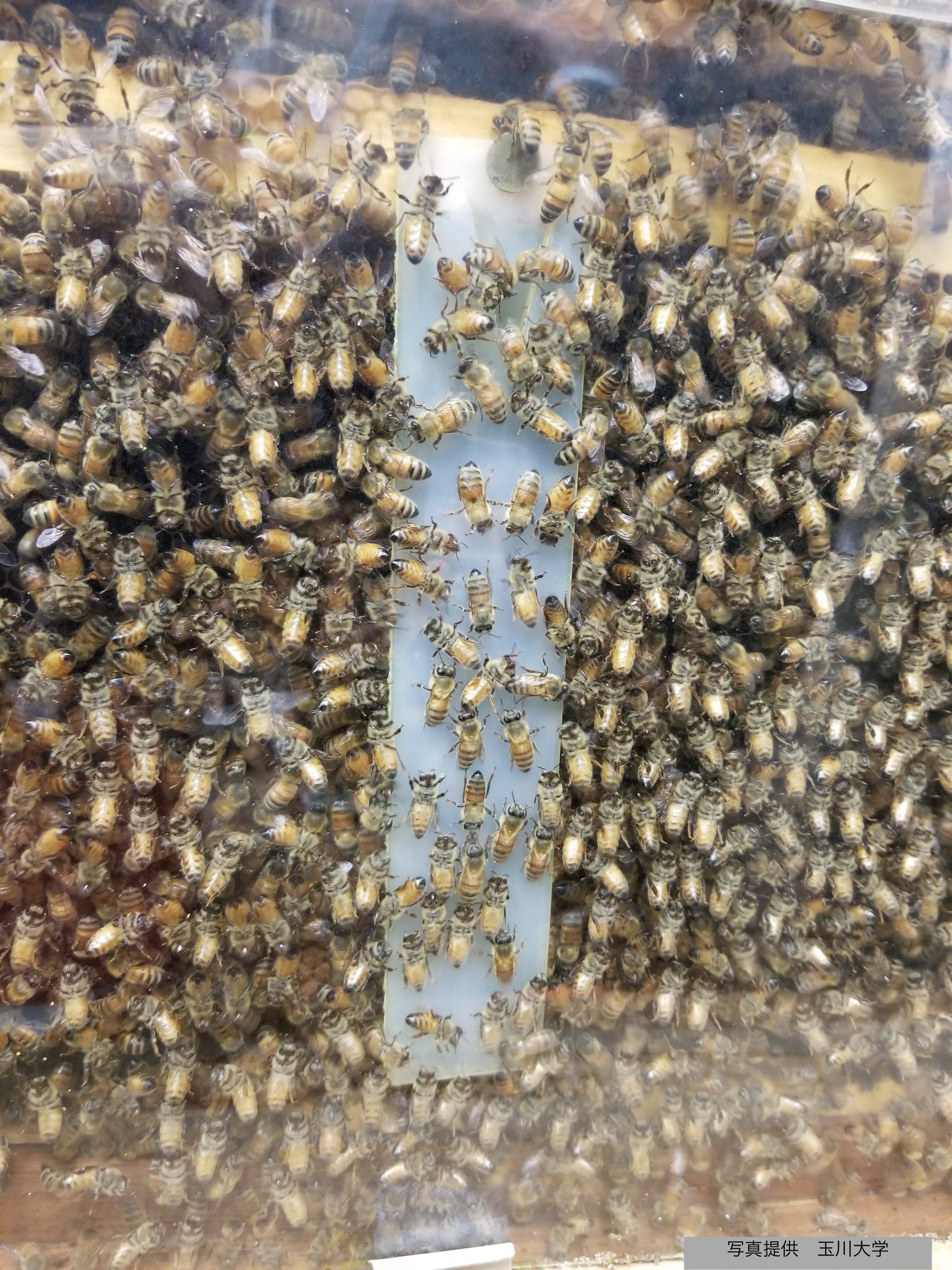The natural enemies live in honeybee's nest
Varroa destructor
Varroa destructor sticks to a honeybee and sucks up its bodily fluids. When parasitic on larvae or pupae, they grow deformed.The parasite bees are fragile and can't function normally. And those bees that are infected with varroa are more susceptible to other diseases.The varroa were originally infected by Asian bees, including Japanese honey bees, but as humans began to move around the world, they once belonged to European bees The varroa is harming not only Japanese bees but also European beekeepers around the world.When the varroa mite enters the nest, it enters the room of the larvae just before they become pupae. When they become pupae, the small room covers the outside, and after they are covered, it is the realm of varroa mite. The body fluids of the pupa are eaten and the nutrition is used to lay eggs, which increases. And then when the parasite bees come out and burrow, they leave together and enter into other small rooms to breed. A hive without the healthy worker bees can't raise the larvae and it collapses. Varroa destructs breed when the colony is covered, so they tend to be parasitic on the larvae of males that have been covered for a long time It's only after the summer when the drones can't grow.
Resource
 The most common is to use mite control drug. The gray bar in the middle there is the drug. Apistan, for example, can get rid of the mites by just putting them in the hive for six weeks when bees don't get honey.Next is the method without using the drug.
The most common is to use mite control drug. The gray bar in the middle there is the drug. Apistan, for example, can get rid of the mites by just putting them in the hive for six weeks when bees don't get honey.Next is the method without using the drug.
Varroa mite has a way of killing it by taking advantage of its ability to host the larvae of males. First of all, you can artificially make a few large beehives for male bees and put them in. Then the queen of the nest lays eggs there, and its larvae become parasitic. All we have to do now is take out the beehive with the varroa mite, and we can get rid of a lot of it.
In addition, the Japanese bees, who were originally hosts of the Varroa mites, have a strong resistance to it. Two worker bees can groom each other and remove the varroa mite.Due to the small nest rooms, they can readily realize larvae with varroa mite and throw it outside. Moreover, it is said that among European bees, a subspecies of Russian native species called Russian native is also highly resistant to varroa.
However, the amount of nectar that Russian beekeepers produce is used for common beekeeping. Because they less produce than Italian ones, they are not used for commercial beekeeping. And it's said to be effective if you reduce the size of the nest. The nesting foundations for beekeeping are5.4mm in size and recently 4.9mm nesting foundations are on the market.
References
Rowan Jacobsen 『蜂はなぜ大量死したのか(原題 Fruitless Fall)』 文芸春秋、2009年
久志冨士男 『ニホンミツバチが日本の農業を救う』 高文研、2009年
ウィキペディア 蜂群崩壊症候群
https://ja.wikipedia.org/wiki/%E8%9C%82%E7%BE%A4%E5%B4%A9%E5%A3%8A%E7%97%87%E5%80%99%E7%BE%A4
一般社団法人 日本養蜂協会 ホームページhttp://www.beekeeping.or.jp/



